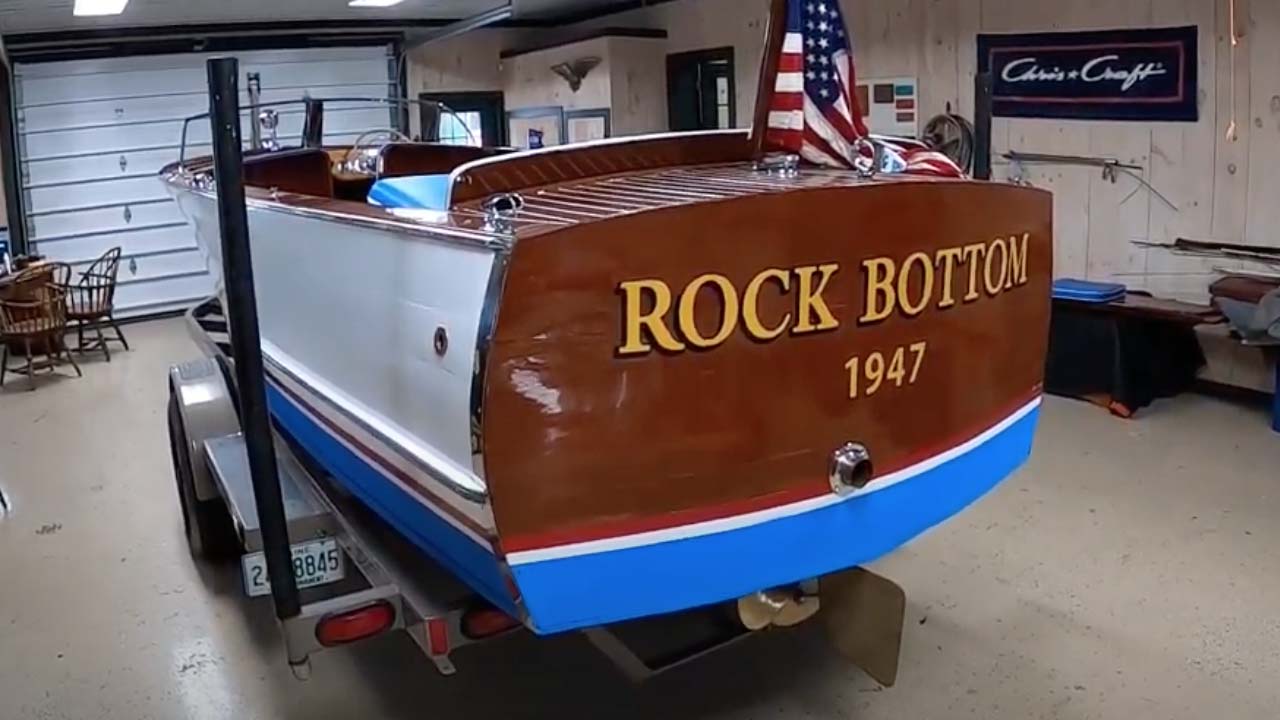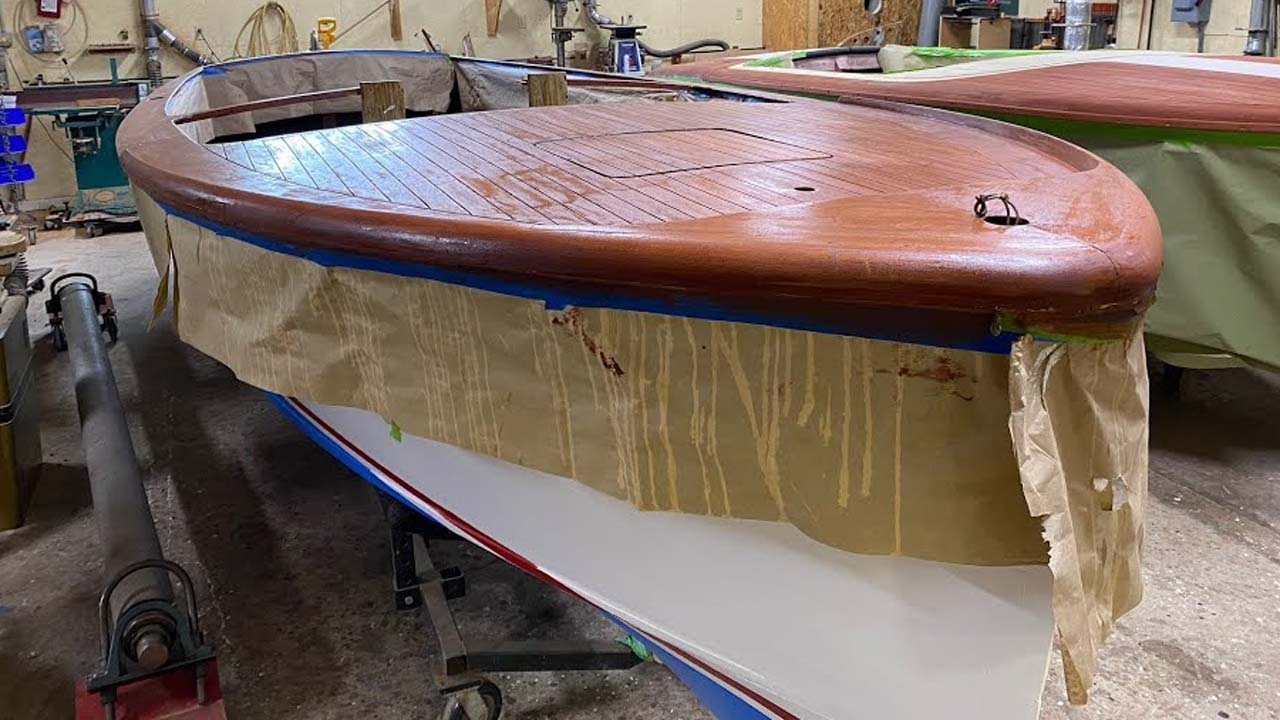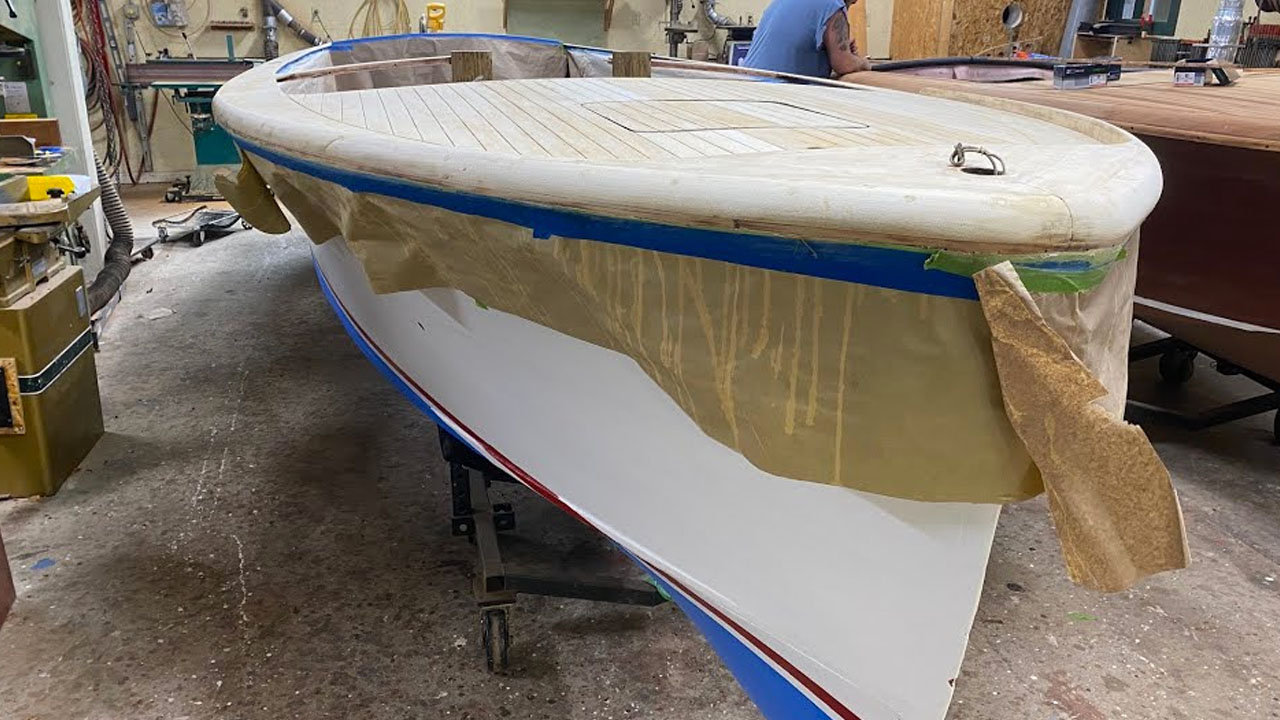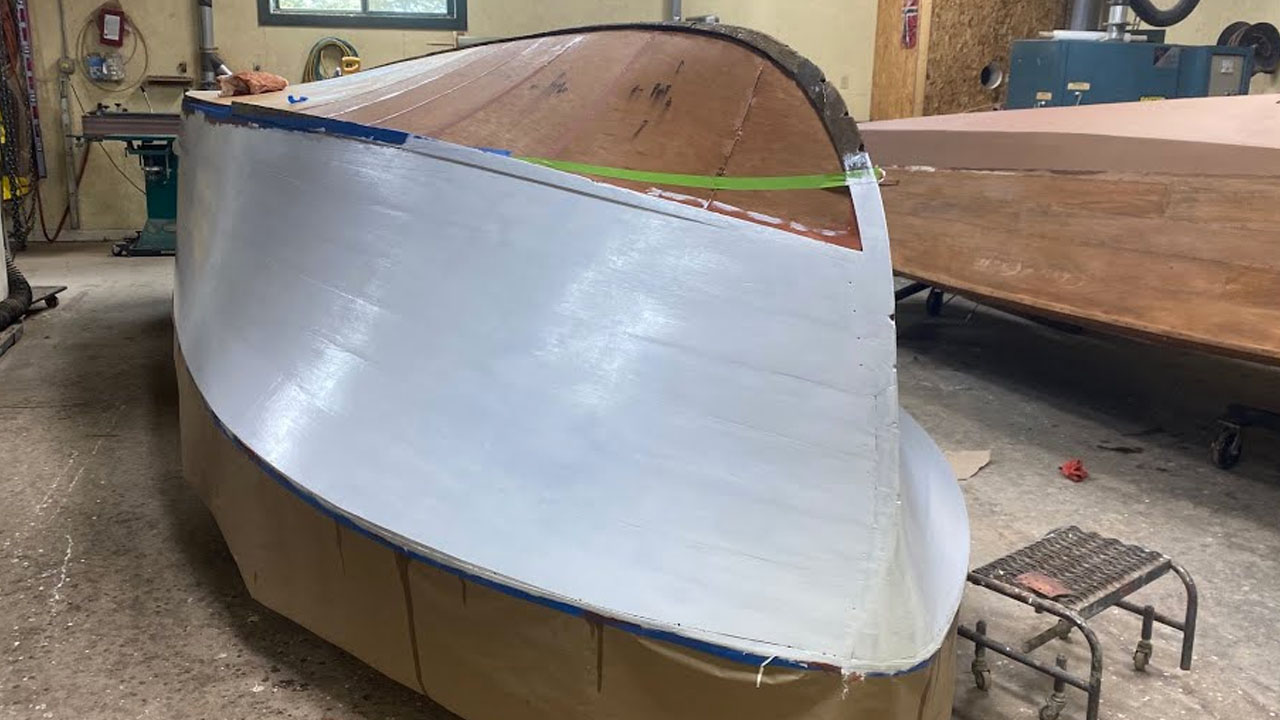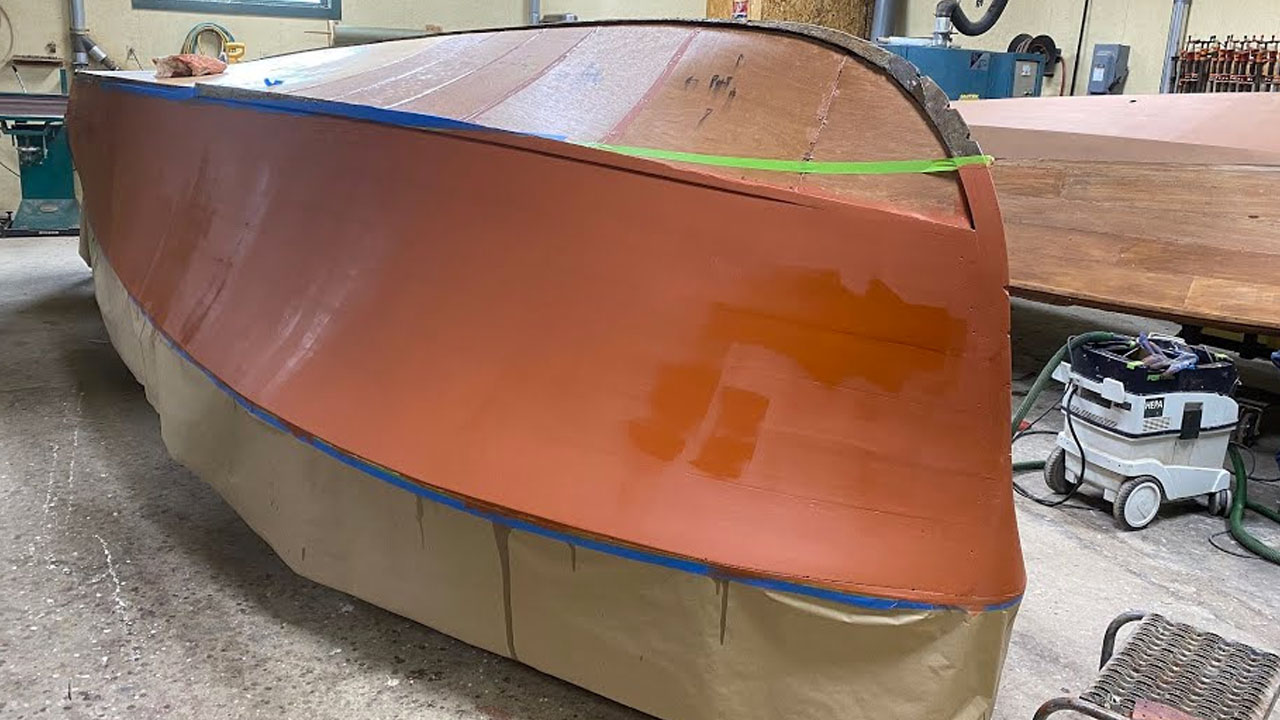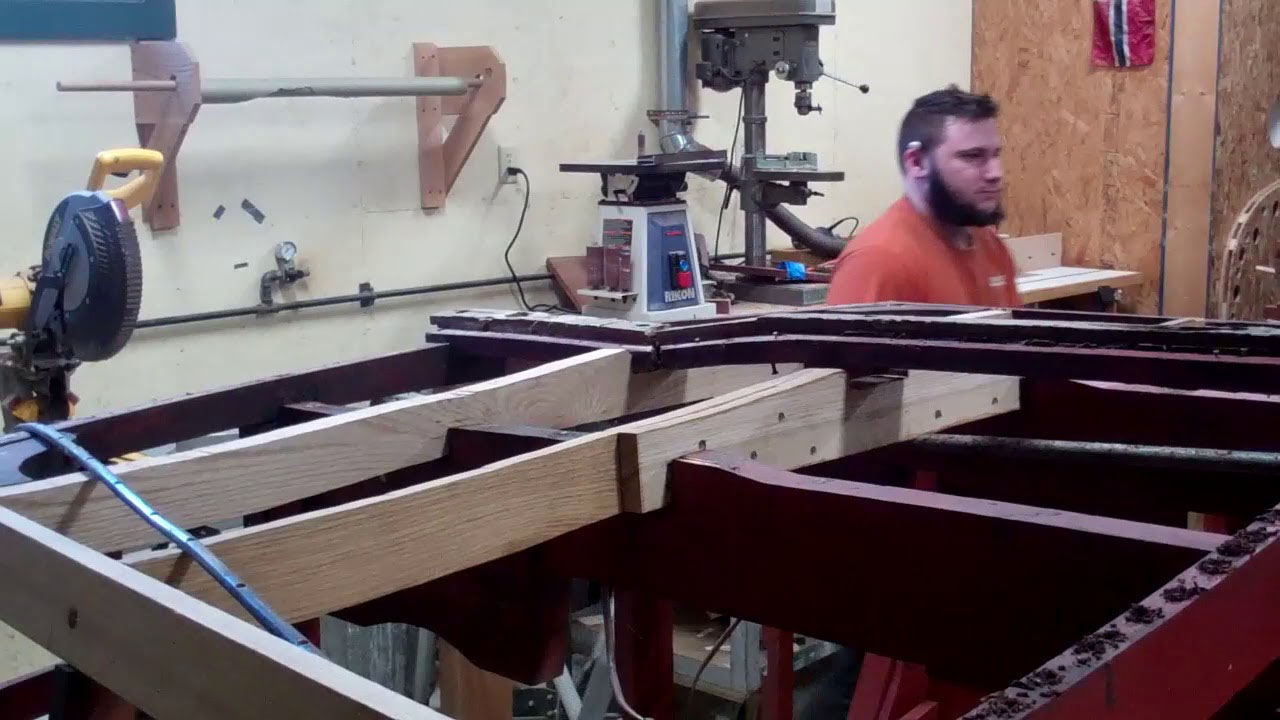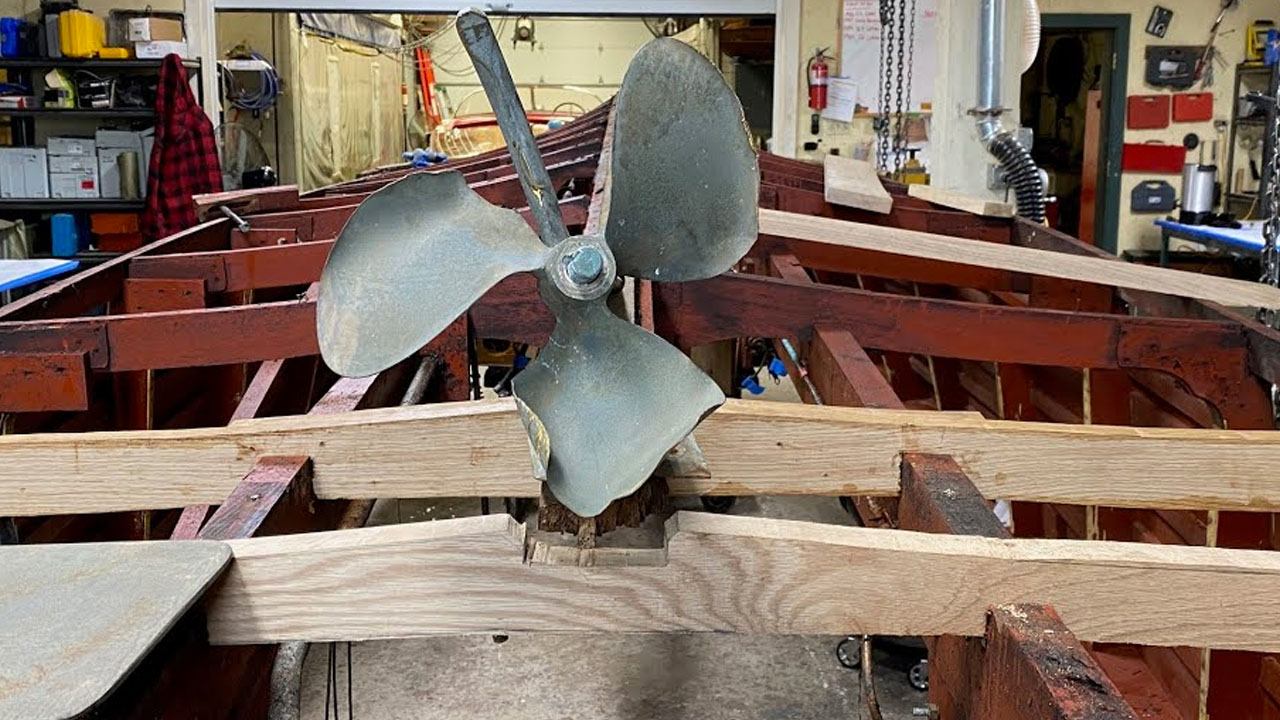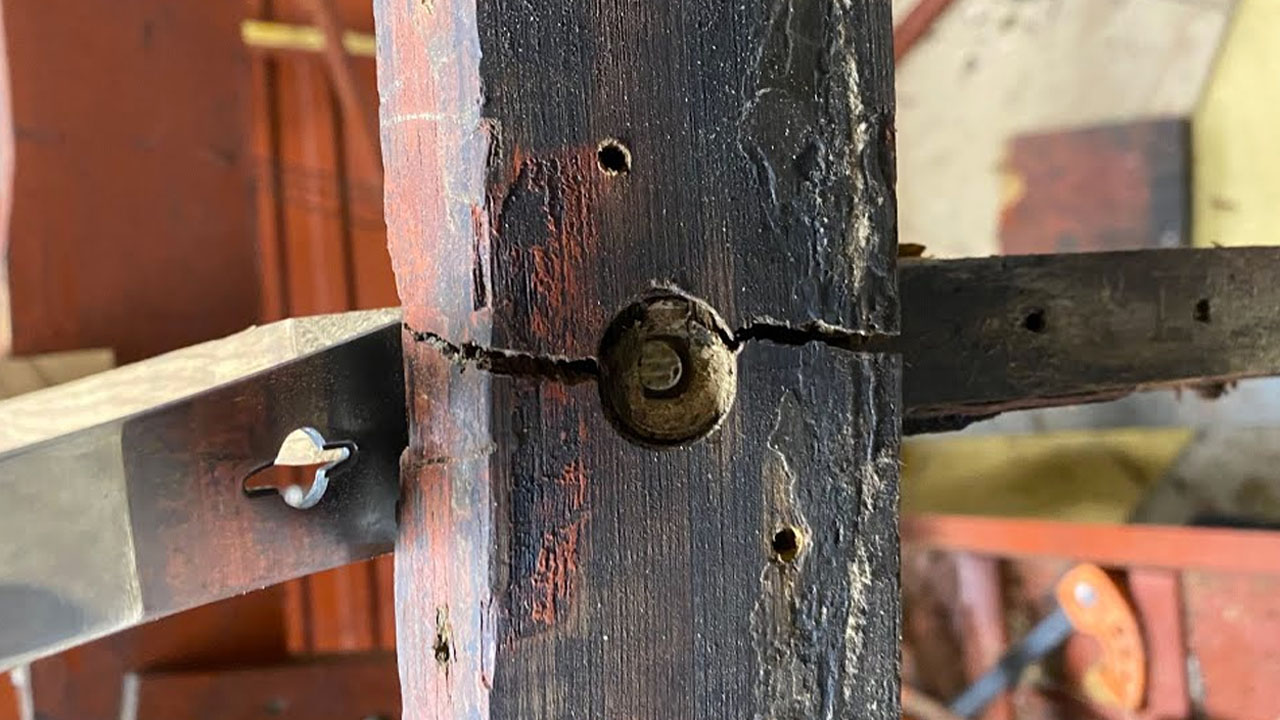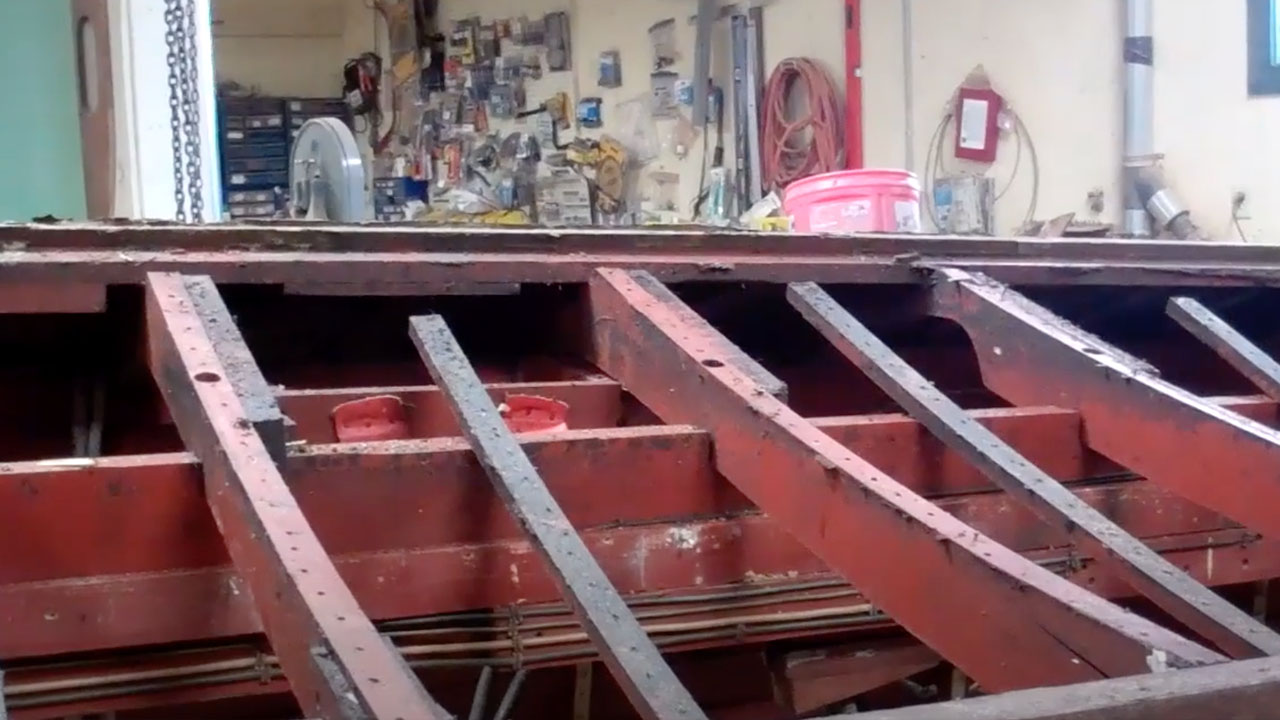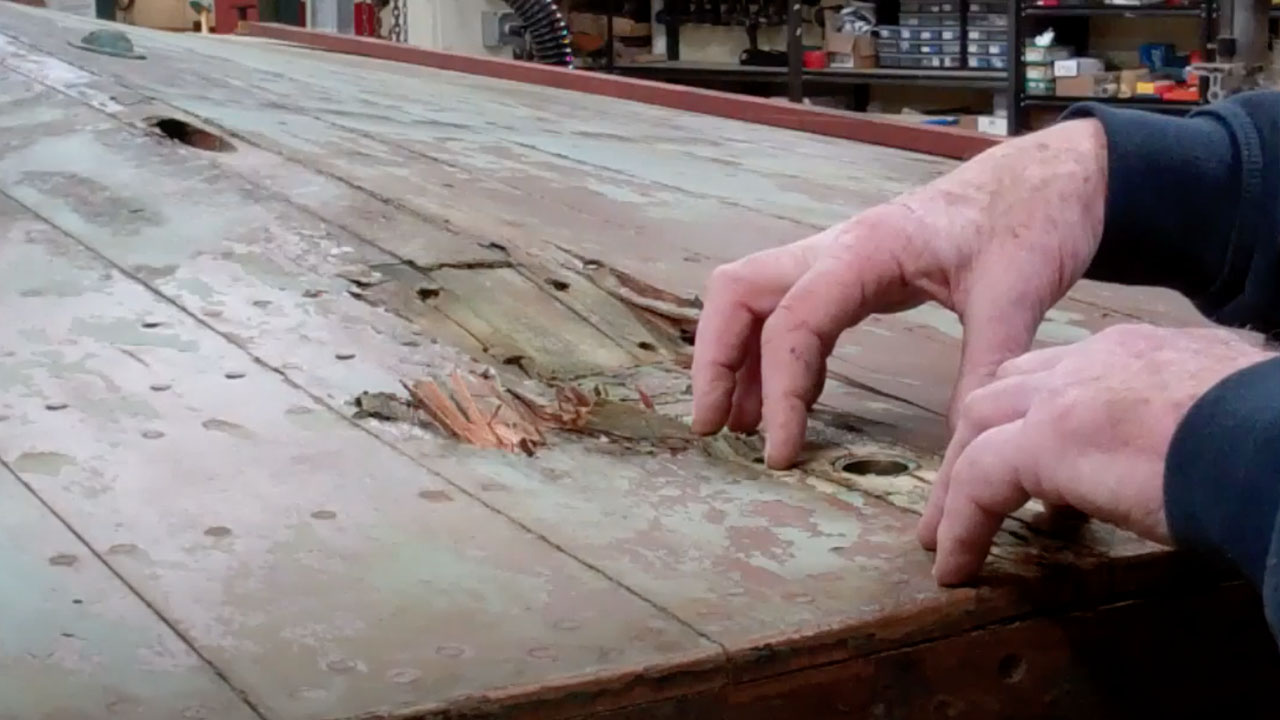For guidance on installing a True 5200 bottom, please click here… for details roster of materials and their sources, click here.
If only the sun were shining! Rock Bottom 1947 has been saved and today was to be her winter debut, that is, before we received six inches of snow last night. So, as we say in Vermont, “We are making do,” and shooting her debut indoors.
She’s endured being majorly disassembled. Her entire bottom and chines were released, failed and oak-soaked frames were replaced. Then the frames received four coats of REAL Smith’s Clear Penetrating Epoxy Sealer and three coats of Smith’s Penetrating Sealer. Three coats of Sandusky Paint Company Chris-Craft Mahogany Bilge Paint followed.
We fabricated her inner skin using 4 mil Meranti Aquatek Marine Plywood that was dosed with four coats of CPES on both sides and all edges and then installed bedded in copious amounts of mahogany 3M 5200 using #6 Frearson driver, silicon bronze flathead wood screws. (The inner faces received three coats of SANPACO bilge paint ahead of installation.)
Her 3/8” Meranti planks, combined with her Meranti plywood inner skin, especially having been heavily frosted with 3M 5200, delivers a near bomb-proof bottom.
The rest of our work was the standard sequence – strip, fair, stain, seal, paint or varnish, varnish some more, and some more, all followed by final assembly. As always:
- Robert Henkel, Peter Henkel INC recovered, rebuilt and thereby saved Rock Bottom’s original engine and driveline
- Shauna Whiting, Kocian Instruments, transformed her tired gauges into cosmetically stunning, perfectly functioning instruments they once were
- Mickey Dupuis and his crew at D&S Custom Metal Restoration transformed dull and scratched into incredibly show-ready hardware
- Chris Hanson, Marine Canvas of Shelburne, restored her upholstery to as new condition.
We did the rest and cannot wait to drop her into Lake Champlain next spring so we can challenge her with her sea trial before returning her to the only home in Maine she has ever known.

